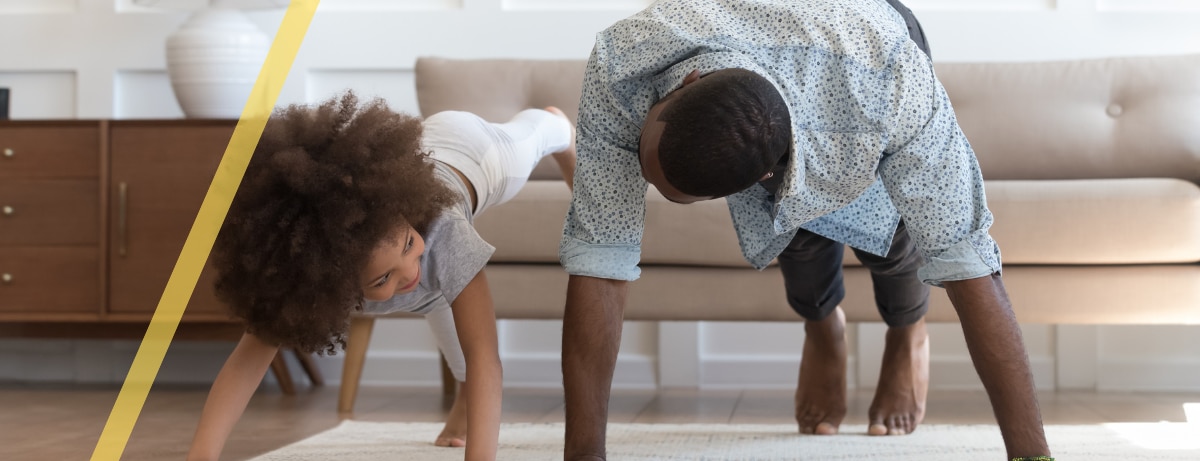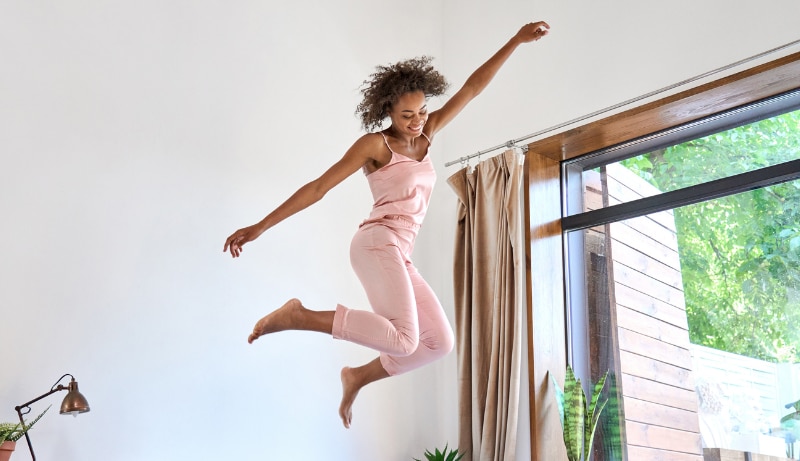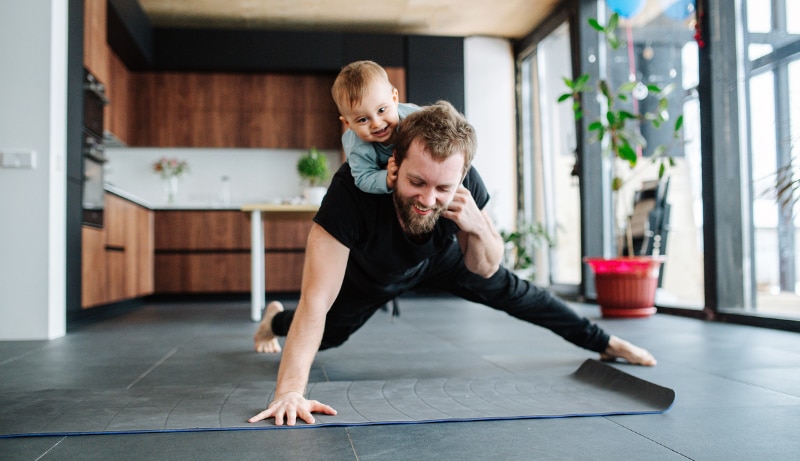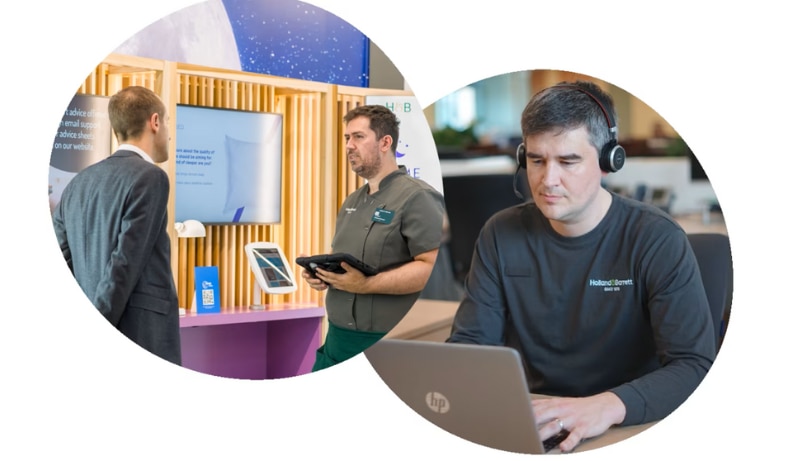20% off €40
Getting active this spring

Together, we can set you up for Spring
The brighter weather’s on its way... you might even spot the sun or some daffodils!
Luckily, it’s a bit easier to get out and about and keep our bodies moving, so that our joints, bones, and muscles stay healthier for longer.
But fun, fulfilling exercise looks different for everyone.
That’s why our experts are here to help you discover the solutions that work perfectly for you. Whether you’re ready for a change or you’ve only got 5 minutes to spare, there’s a way to support your body and get moving a little more. Here’s to a Spring refresh!
We’ve got over 150 years of expertise behind us – and we’re continually growing, thanks to specialists like our Digital Health Lead, Fiona Sweny.
Meet the expert, as a former Army Officer and a qualified physiotherapist, Fiona really knows her stuff when it comes to getting set for more movement. Her career as a physiotherapist includes working for England Rugby and The Royal Ballet School.
Below you’ll find some of her quick top tips for helping to support your joint, bone, and muscle health...
Expert tips:
- Movement habits: your routine doesn't have to change drastically. Try walking meetings or parking further away.
- Vitamin D: Vitamin D helps keep your bones and muscles healthy. If you can't get it from your diet, it might be worth considering taking supplements.
- Muscle recovery foods: Try to choose protein-rich foods, along with carbohydrates, to kick start the rebuilding process after exercising
- Find the fun: Choose an activity that you enjoy, or exercise with friends. Fun is essential to maintaining regular habits.
*You can get vitamin D from oily fish and egg yolks. NHS guidelines suggest that everyone should consider taking a vitamin D supplement between October and March
What is movement?
It doesn’t have to be a marathon – though it can be! “Moving more” is totally unique to you – whether that’s smashing your PBs or a gentle breaktime stretch.
Many of us are used to the “rule” of getting 10,000 steps per day. While it’s a good way of staying on your feet, some studies find that fewer (as few as 4400 in some groups of people) may still have a positive effect on your long-term health.¹
Understanding your own body can help you understand what kind of movement works best for you, too.
- Joints are where two bones meet. It’s important to keep them flexible and well-supported to minimise joint pain.
- Bones provide structure to the body. To stay healthy, bones need to be strong and dense.
- Muscles relax and contract. They push and pull your bones and other body parts, from your intestines to your eyes. Strong, flexible muscles help you move more easily.


Staying active will benefit all these areas – but there are certain exercises you can do if you’d like to focus on one in particular.
“Low-impact” activities like walking, cycling, swimming, and using elliptical machines (like cross trainers) are some of the most gentle on your joints.²
Resistance exercises (where you bear weight) can help to strengthen your bones. These include activities like walking, jogging, tennis, and lifting weights.³
Strength exercises help to work your muscles. Lifting weights is one way to practice strength training, but you could also dance, do yoga, climb the stairs, or do sit-ups...this is a versatile one! ⁴
Why is movement good for me?
Why is movement good for me?
In short: being active keeps you active! Finding movement you enjoy will keep you motivated to carry on. In turn, you’ll stay fitter and more able to stay moving in the future.
If you exercise regularly, you’ll decrease your risk of long-term conditions affecting your joints, bones, and muscles.
Staying active can help you maintain a weight that’s healthy for you, lowering your chances of obesity-related illnesses in the future5.


Older people might find they’re at less risk of dangerous falls if their joints, bones, and muscles are healthy. ⁶ Plus, it sends “happy hormones” to the brain! ⁷
Together, we’ll help you find a way to move that makes you feel powerful.
How can I move more?
How can I move more?
It feels like many of us have got less and less time than ever. Whether you spend a few minutes or a few hours up and about, how do you fit more movement into an already packed day?
“Moving more” will look different depending on your daily routine. Do any of these groups ring a bell...?


Glued to your inbox during the day? If movement doesn’t naturally slot into your routine, it’s all about finding the small moments. A tea-break stretch or an extra minute’s walk to the car can all add up.
“Try squats while the kettle boils or calf raises when you’re cleaning your teeth,” Fiona advises.
“Don’t forget pelvic floor – for men and women; it can be done at the traffic lights or on the train! Tiny habits built into everyday occurrences can make a difference.”
Or try:
- Suggesting a “walk and talk” for more informal meetings.
- Finding a spot outside to enjoy your lunch, even if it’s only 5 minutes’ walk away.
- Volunteering for the tea and coffee rounds – plenty of trips back and forth!
- Fitting in some movement in as soon as you finish work. If you sit down now, you might not get back up again! Plus, it’s a great way to unwind and set a transition period between work and relaxation time.
Dressed a toddler and played hide-and-seek by 9am? Good news: it’s likely you’re moving more than you think.
Don’t worry if you’ve exhausted the local park! There are other ways to get active:
- Always hunting for a space outside school? Park a few streets away and use those 10 minutes to walk instead.
- Throw a 10-minute dance party! Blast everyone’s favourite tunes and see who’s got the best moves...
- Search your local community pages, social media groups, or the library for family activity sessions.
- Dropped your child off at a club that’s not quite long enough for you to pop to the shop or head home? Avoid the awkward wait in the car – go for a stroll instead.
If the gym feels like your second home, getting more active might feel unclear. You already spend enough time on your feet – what else can you do?!
- Set goals to smash your PBs, so you can train harder in the same amount of time.
- Try something new! It might feel strange to be a beginner again, but you’ll work new muscles and break up the monotony of exercising the same way again and again.
- Ditch the car where you can. Why not swap your usual drive for a jog or cycle?
- Put your skills to good use and mentor a friend or family member.
You’ve got time during the day, but maybe exercise feels daunting or it’s not as easy for you to move your body the way you’d like.
- If you can, park at the back of the car park and walk for a few minutes, or get off the bus a stop early.
- Try a low-impact sport like swimming to take pressure off your joints and bones.
- See if there are any activities you can do standing that you’d usually do sitting down. Think watching a short TV show, folding laundry, or calling a friend.
- “Involve, not revolve”: plan activities that include movement, but aren’t centred around it. A wander round the shops or a trip to a museum will get you moving but provide space to rest when you need it.
- Kickstart the day with an energising yoga routine, like a sun salutation, which can be adapted to chair-based exercises if needed.
Of course, you can fit more than one of these groups!
We want to find a way of moving that’s the most enjoyable and sustainable for you. Visit us in-store or book a free 15-minute consultation online; our colleagues are here to listen and all hold 25 hours of Qualified to Advise training.
Together, we’ll choose a tailored solution that makes getting active as fun and comfortable as it should be.


Why not start now?
We’ve partnered with certified yoga teacher Sarah Malcolm for a series of calming and strengthening yoga routines. No need for prior experience – they're all about learning to unwind and discover what feels right for your body.
You’ll find Episode 1: Yoga for beginners below. Take a screen break and revive your mind!
Yoga Sessions | Beginners Guide to Yoga with Sarah Malcolm | Holland & Barrett
Top tips for moving
- Practicing good sleep hygiene can help you get a longer and more restful night’s sleep, which in turn will keep you energised and ready to move. For many people, exercise improves sleep quality – but, if you work out late at night, bear in mind that some sources believe intense exercise right before bed may interfere with your sleep.8 This is down to debate, though!
- A balanced diet is important, too: food is fuel! Getting the nutrients you need will provide your brain and muscles with the strength to get active.
- B vitamins are some of the best energy supporters, so stock up the fridge with leafy greens, meat, beans, and wholegrains.9 However, if you struggle to get your vitamin B through your diet, a daily supplement can provide some extra help.
- Finally, get a workout buddy if you can! There’s evidence to suggest you’re more likely to perform more intense exercise and stick to a workout plan for longer if you’ve got someone by your side.
- One study found that people held a plank position for longer when they were accompanied by a partner, while another found that people spent longer exercising in general. 10 11
The no-jargon guide to joints, bones, & muscles
It can be tough to know what these terms mean. And even more so to know exactly how they work together in the body.
So, we’ve explained a few words you might see floating around.
Want to learn more? You can find our full glossary here...
A type of molecule that combines to make a protein – they're known as the “building blocks” of protein. 12
There are three types of amino acids: essential, nonessential, and conditional: 12
- Our body cannot make essential amino acids, so we need to get them from food.
- But they can produce nonessential amino acids.
- Conditional amino acids depend on the situation. They’re not usually essential, but they might be when we’re particularly ill or stressed.
An essential mineral. Calcium is most known for keeping our bones and teeth strong. However, it’s also responsible for controlling muscles and nerves.
Synaptic vesicles store neurotransmitters, which send messages to the brain to contract or relax the muscle. But these neurotransmitters need calcium in order to be released from the synaptic vesicles and send the message.13
Calcium is also important for making sure blood clots normally. 14
Calcium deficiency can lead to issues with your bones, including conditions like osteoporosis in adults or rickets in children.
You should be able to get the calcium you need through a balanced diet, including calcium-rich foods like milk (dairy or fortified plant-based milk), leafy green veg, and bread. ²⁰
A plant named after its spiky fruit. According to the British Herbal Medicine Association (BHMA), some devil's claw products may be used to help ease joint and muscle pain. 15
The extract is usually made from the dried root of the plant, and you can find supplements in teas, tablets, and capsules.
It’s considered safe for most people, but you should speak to your GP before taking devil’s claw supplements.
An essential mineral that helps the body turn food into energy, as well as supporting bone health. 16
But magnesium plays a part in over 300 different functions in the body. Nerves need magnesium to send and receive messages, and muscles need it to function properly. 16
Women aged 19 to 64 need 270mg of magnesium per day, and men of the same age need 300mg. 16
It’s best to get magnesium through your diet where you can: good sources include spinach, nuts, and wholemeal bread. 17
Recommended by our expert nutritionist Alex Glover
Our team of experts know there’s no one-size-fits-all for joint, bone, and muscle support. It has to work for you – that’s why our experts are on hand online and in-store to find a solution that slots into your day.
Supporting a healthy body can look like anything from a balanced and tasty breakfast to a post-workout recovery session.
Meet the expert, Alex is a registered member of the Association for Nutrition, Alex Glover completed his MSc in Clinical Nutrition in 2021 and has published research in the SAGE journal “Nutrition & Health”. Alex specialises in metabolism, diet and ageing, and the gut microbiome. Due to his extensive knowledge, Alex plays a key role in developing premium vitamin & mineral supplements here at H&B.
Check out our top picks to support joints, bones, and muscles below, selected by our Senior Nutritionist Alex Glover.
- https://jamanetwork.com/journals/jamainternalmedicine/fullarticle/2734709
- https://health.clevelandclinic.org/how-to-keep-your-joints-healthy-with-the-right-exercise/
- https://www.niams.nih.gov/health-topics/bone-health-and-osteoporosis
- https://www.nhs.uk/live-well/exercise/strength-and-flexibility-exercises/how-to-improve-strength-flexibility/
- https://www.nhs.uk/live-well/exercise/exercise-health-benefits/
- https://www.sleepfoundation.org/physical-activity/exercise-and-sleep
- https://www.england.nhs.uk/blog/movement-is-medicine/
- https://www.sleepfoundation.org/physical-activity/exercise-and-sleep
- https://www.nhs.uk/conditions/vitamins-and-minerals/vitamin-b/
- https://www.researchgate.net/publication/51539278_Buddy_Up_The_Kohler_Effect_Applied_to_Health_Games
- https://core.ac.uk/download/pdf/10652724.pdf
- https://medlineplus.gov/ency/article/002222.htm
- https://www.ncbi.nlm.nih.gov/pmc/articles/PMC3249630/
- https://www.nhs.uk/conditions/vitamins-and-minerals/calcium/
- https://bhma.info/indications/muscle-back-joint-pain/devils-claw/
- https://www.nhs.uk/conditions/vitamins-and-minerals/others/
- https://www.health.harvard.edu/staying-healthy/what-you-should-know-about-magnesium2
The advice in this article is for information only and should not replace medical care. Please check with your GP or healthcare professional before trying any supplements, treatments or remedies. Food supplements must not be used as a substitute for a varied and balanced diet and a healthy lifestyle.
Before taking any supplements or minerals, it’s best to make sure you’re getting all the nutrients through your diet first. Food supplements must not be used as a substitute for a varied and balanced diet and a healthy lifestyle.
If you have sensitive skin, eczema, psoriasis, acne or rosacea, consult a dermatologist before trying any treatments. It is important to always check with your doctor or midwife before taking any supplements while pregnant.
If you are pregnant, breastfeeding, taking any medications or under medical supervision, please consult a doctor or healthcare professional before use.



